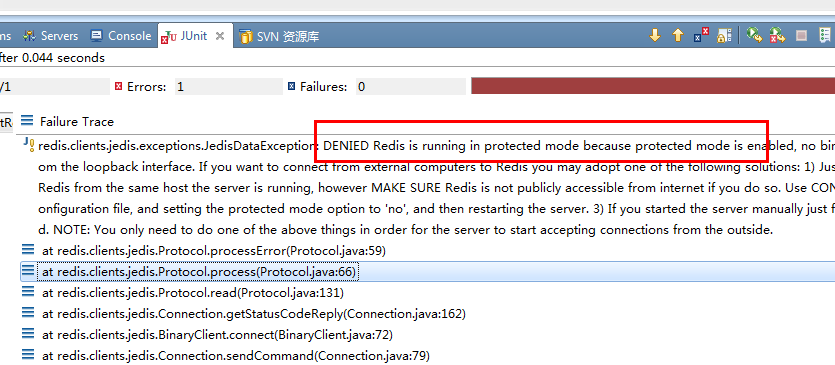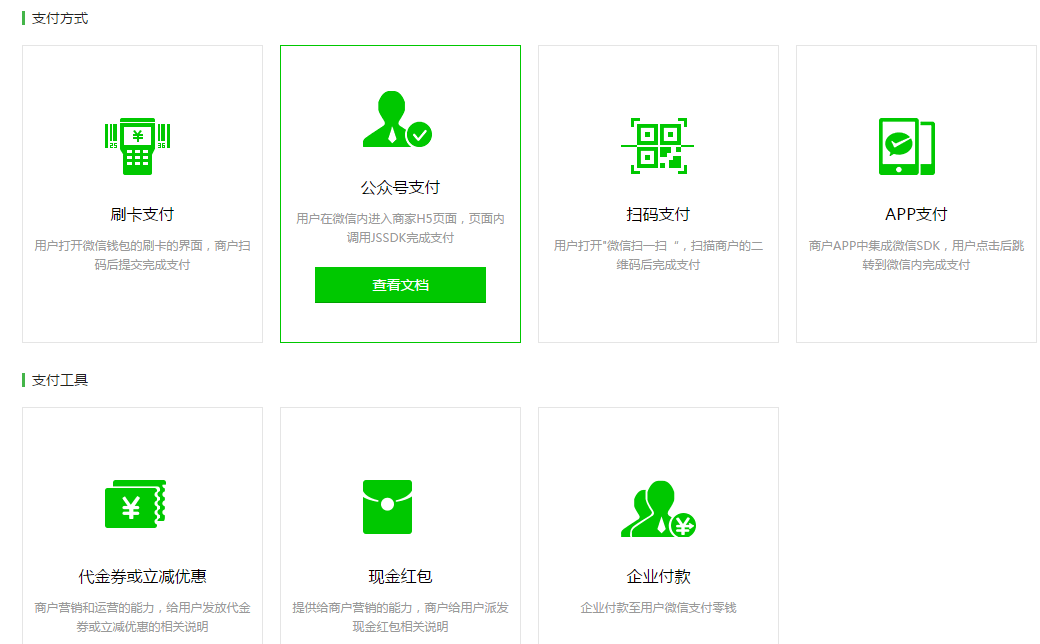浅谈SpringBoot核心注解原理
SpringBoot核心注解原理
今天跟大家来探讨下SpringBoot的核心注解@SpringBootApplication以及run方法,理解下springBoot为什么不需要XML,达到零配置
首先我们先来看段代码
@SpringBootApplicationpublic class StartEurekaApplication{public static void main(String[] args){SpringApplication.run(StartEurekaApplication.class, args);}}
我们点进@SpringBootApplication来看
@Target(ElementType.TYPE)@Retention(RetentionPolicy.RUNTIME)@Documented@Inherited@SpringBootConfiguration@EnableAutoConfiguration@ComponentScan(excludeFilters = {@Filter(type = FilterType.CUSTOM, classes = TypeExcludeFilter.class),@Filter(type = FilterType.CUSTOM, classes = AutoConfigurationExcludeFilter.class) })public @interface SpringBootApplication {}
上面的元注解我们在这里不在做解释,相信大家在开发当中肯定知道,我们要来说@SpringBootConfiguration @EnableAutoConfiguration 这两个注解,到这里我们知道 SpringBootApplication注解里除了元注解,我们可以看到又是@SpringBootConfiguration,@EnableAutoConfiguration,@ComponentScan的组合注解,官网上也有详细说明,那我们现在把目光投向这三个注解。
首先我们先来看 @SpringBootConfiguration,那我们点进来看
@Target(ElementType.TYPE)@Retention(RetentionPolicy.RUNTIME)@Documented@Configurationpublic @interface SpringBootConfiguration {}
我们可以看到这个注解除了元注解以外,就只有一个@Configuration,那也就是说这个注解相当于@Configuration,所以这两个注解作用是一样的,那他是干嘛的呢,相信很多人都知道,它是让我们能够去注册一些额外的Bean,并且导入一些额外的配置。那@Configuration还有一个作用就是把该类变成一个配置类,不需要额外的XML进行配置。所以@SpringBootConfiguration就相当于@Configuration。
那我们继续来看下一个@EnableAutoConfiguration,这个注解官网说是 让Spring自动去进行一些配置,那我们点进来看
@Target(ElementType.TYPE)@Retention(RetentionPolicy.RUNTIME)@Documented@Inherited@AutoConfigurationPackage@Import(EnableAutoConfigurationImportSelector.class)public @interface EnableAutoConfiguration {}
可以看到它是由 @AutoConfigurationPackage,@Import(EnableAutoConfigurationImportSelector.class)这两个而组成的,我们先说@AutoConfigurationPackage,他是说:让包中的类以及子包中的类能够被自动扫描到spring容器中。 我们来看@Import(EnableAutoConfigurationImportSelector.class)这个是核心,之前我们说自动配置,那他到底帮我们配置了什么,怎么配置的?就和@Import(EnableAutoConfigurationImportSelector.class)息息相关,程序中默认使用的类就自动帮我们找到。我们来看EnableAutoConfigurationImportSelector.class
public class EnableAutoConfigurationImportSelectorextends AutoConfigurationImportSelector {@Overrideprotected boolean isEnabled(AnnotationMetadata metadata) {if (getClass().equals(EnableAutoConfigurationImportSelector.class)) {return getEnvironment().getProperty(EnableAutoConfiguration.ENABLED_OVERRIDE_PROPERTY, Boolean.class,true);}return true;}}
可以看到他继承了AutoConfigurationImportSelector我们继续来看AutoConfigurationImportSelector,这个类有一个方法
public String[] selectImports(AnnotationMetadata annotationMetadata) {if (!isEnabled(annotationMetadata)) {return NO_IMPORTS;}try {AutoConfigurationMetadata autoConfigurationMetadata = AutoConfigurationMetadataLoader.loadMetadata(this.beanClassLoader);AnnotationAttributes attributes = getAttributes(annotationMetadata);List<String> configurations = getCandidateConfigurations(annotationMetadata,attributes);configurations = removeDuplicates(configurations);configurations = sort(configurations, autoConfigurationMetadata);Set<String> exclusions = getExclusions(annotationMetadata, attributes);checkExcludedClasses(configurations, exclusions);configurations.removeAll(exclusions);configurations = filter(configurations, autoConfigurationMetadata);fireAutoConfigurationImportEvents(configurations, exclusions);return configurations.toArray(new String[configurations.size()]);}catch (IOException ex) {throw new IllegalStateException(ex);}}
这个类会帮你扫描那些类自动去添加到程序当中。我们可以看到getCandidateConfigurations()这个方法,他的作用就是引入系统已经加载好的一些类,到底是那些类呢,我们点进去看一下
protected List<String> getCandidateConfigurations(AnnotationMetadata metadata,AnnotationAttributes attributes) {List<String> configurations = SpringFactoriesLoader.loadFactoryNames(getSpringFactoriesLoaderFactoryClass(), getBeanClassLoader());Assert.notEmpty(configurations,"No auto configuration classes found in META-INF/spring.factories. If you "+ "are using a custom packaging, make sure that file is correct.");return configurations;}
这个类回去寻找的一个目录为META-INF/spring.factories,也就是说他帮你加载让你去使用也就是在这个META-INF/spring.factories目录装配的,他在哪里?
我们点进spring.factories来看
我们可以发现帮我们配置了很多类的全路径,比如你想整合activemq,或者说Servlet
可以看到他都已经帮我们引入了进来,我看随便拿几个来看
org.springframework.boot.autoconfigure.security.SecurityAutoConfiguration,\org.springframework.boot.autoconfigure.security.SecurityFilterAutoConfiguration,\org.springframework.boot.autoconfigure.security.FallbackWebSecurityAutoConfiguration,\org.springframework.boot.autoconfigure.security.oauth2.OAuth2AutoConfiguration,\
比如我们经常用的security,可以看到已经帮你配置好,所以我们的EnableAutoConfiguration主要作用就是让你自动去配置,但并不是所有都是创建好的,是根据你程序去进行决定。 那我们继续来看
@ComponentScan(excludeFilters = { @Filter(type = FilterType.CUSTOM, classes = TypeExcludeFilter.class), @Filter(type = FilterType.CUSTOM, classes = AutoConfigurationExcludeFilter.class) })
这个注解大家应该都不陌生,扫描包,放入spring容器,那他在springboot当中做了什么策略呢?我们可以点跟烟去思考,帮我们做了一个排除策略,他在这里结合SpringBootConfiguration去使用,为什么是排除,因为不可能一上来全部加载,因为内存有限。
那么我们来总结下@SpringbootApplication:就是说,他已经把很多东西准备好,具体是否使用取决于我们的程序或者说配置,那我们到底用不用?那我们继续来看一行代码
public static void main(String[] args){SpringApplication.run(StartEurekaApplication.class, args);}
那们来看下在执行run方法到底有没有用到哪些自动配置的东西,比如说内置的Tomcat,那我们来找找内置Tomcat,我们点进run
public static ConfigurableApplicationContext run(Object[] sources, String[] args) {return new SpringApplication(sources).run(args);}
然后他调用又一个run方法,我们点进来看
public ConfigurableApplicationContext run(String... args) {//计时器StopWatch stopWatch = new StopWatch();stopWatch.start();ConfigurableApplicationContext context = null;FailureAnalyzers analyzers = null;configureHeadlessProperty();//监听器SpringApplicationRunListeners listeners = getRunListeners(args);listeners.starting();try {ApplicationArguments applicationArguments = new DefaultApplicationArguments(args);ConfigurableEnvironment environment = prepareEnvironment(listeners,applicationArguments);Banner printedBanner = printBanner(environment);//准备上下文context = createApplicationContext();analyzers = new FailureAnalyzers(context);//预刷新contextprepareContext(context, environment, listeners, applicationArguments,printedBanner);//刷新contextrefreshContext(context);//刷新之后的contextafterRefresh(context, applicationArguments);listeners.finished(context, null);stopWatch.stop();if (this.logStartupInfo) {new StartupInfoLogger(this.mainApplicationClass).logStarted(getApplicationLog(), stopWatch);}return context;}catch (Throwable ex) {handleRunFailure(context, listeners, analyzers, ex);throw new IllegalStateException(ex);}}
那我们关注的就是 refreshContext(context); 刷新context,我们点进来看
private void refreshContext(ConfigurableApplicationContext context) {refresh(context);if (this.registerShutdownHook) {try {context.registerShutdownHook();}catch (AccessControlException ex) {// Not allowed in some environments.}}}
我们继续点进refresh(context);
protected void refresh(ApplicationContext applicationContext) {Assert.isInstanceOf(AbstractApplicationContext.class, applicationContext);((AbstractApplicationContext) applicationContext).refresh();}
他会调用 ((AbstractApplicationContext) applicationContext).refresh();方法,我们点进来看
public void refresh() throws BeansException, IllegalStateException {synchronized (this.startupShutdownMonitor) {// Prepare this context for refreshing.prepareRefresh();// Tell the subclass to refresh the internal bean factory.ConfigurableListableBeanFactory beanFactory = obtainFreshBeanFactory();// Prepare the bean factory for use in this context.prepareBeanFactory(beanFactory);try {// Allows post-processing of the bean factory in context subclasses.postProcessBeanFactory(beanFactory);// Invoke factory processors registered as beans in the context.invokeBeanFactoryPostProcessors(beanFactory);// Register bean processors that intercept bean creation.registerBeanPostProcessors(beanFactory);// Initialize message source for this context.initMessageSource();// Initialize event multicaster for this context.initApplicationEventMulticaster();// Initialize other special beans in specific context subclasses.onRefresh();// Check for listener beans and register them.registerListeners();// Instantiate all remaining (non-lazy-init) singletons.finishBeanFactoryInitialization(beanFactory);// Last step: publish corresponding event.finishRefresh();}catch (BeansException ex) {if (logger.isWarnEnabled()) {logger.warn("Exception encountered during context initialization - " +"cancelling refresh attempt: " + ex);}// Destroy already created singletons to avoid dangling resources.destroyBeans();// Reset 'active' flag.cancelRefresh(ex);// Propagate exception to caller.throw ex;}finally {// Reset common introspection caches in Spring's core, since we// might not ever need metadata for singleton beans anymore...resetCommonCaches();}}}
这点代码似曾相识啊 没错,就是一个spring的bean的加载过程我在,解析springIOC加载过程的时候介绍过这里面的方法,如果你看过Spring源码的话 ,应该知道这些方法都是做什么的。现在我们不关心其他的,我们来看一个方法叫做 onRefresh();方法
protected void onRefresh() throws BeansException {// For subclasses: do nothing by default.}
他在这里并没有实现,但是我们找他的其他实现,我们来找
我们既然要找Tomcat那就肯定跟web有关,我们可以看到有个ServletWebServerApplicationContext
@Overrideprotected void onRefresh() {super.onRefresh();try {createWebServer();}catch (Throwable ex) {throw new ApplicationContextException("Unable to start web server", ex);}}
我们可以看到有一个createWebServer();方法他是创建web容器的,而Tomcat不就是web容器,那他是怎么创建的呢,我们继续看
private void createWebServer() {WebServer webServer = this.webServer;ServletContext servletContext = getServletContext();if (webServer == null && servletContext == null) {ServletWebServerFactory factory = getWebServerFactory();this.webServer = factory.getWebServer(getSelfInitializer());}else if (servletContext != null) {try {getSelfInitializer().onStartup(servletContext);}catch (ServletException ex) {throw new ApplicationContextException("Cannot initialize servlet context",ex);}}initPropertySources();}
factory.getWebServer(getSelfInitializer());他是通过工厂的方式创建的
public interface ServletWebServerFactory {WebServer getWebServer(ServletContextInitializer... initializers);}
可以看到 它是一个接口,为什么会是接口。因为我们不止是Tomcat一种web容器。
我们看到还有Jetty,那我们来看TomcatServletWebServerFactory
@Overridepublic WebServer getWebServer(ServletContextInitializer... initializers) {Tomcat tomcat = new Tomcat();File baseDir = (this.baseDirectory != null) ? this.baseDirectory: createTempDir("tomcat");tomcat.setBaseDir(baseDir.getAbsolutePath());Connector connector = new Connector(this.protocol);tomcat.getService().addConnector(connector);customizeConnector(connector);tomcat.setConnector(connector);tomcat.getHost().setAutoDeploy(false);configureEngine(tomcat.getEngine());for (Connector additionalConnector : this.additionalTomcatConnectors) {tomcat.getService().addConnector(additionalConnector);}prepareContext(tomcat.getHost(), initializers);return getTomcatWebServer(tomcat);}
那这块代码,就是我们要寻找的内置Tomcat,在这个过程当中,我们可以看到创建Tomcat的一个流程。因为run方法里面加载的东西很多,所以今天就浅谈到这里。如果不明白的话, 我们在用另一种方式来理解下,大家要应该都知道stater举点例子
<dependency><groupId>org.springframework.boot</groupId><artifactId>spring-boot-starter-data-redis</artifactId></dependency><dependency><groupId>org.springframework.boot</groupId><artifactId>spring-boot-starter-freemarker</artifactId></dependency>
所以我们不防不定义一个stater来理解下,我们做一个需求,就是定制化不同的人跟大家说你们好,我们来看
<parent><groupId>org.springframework.boot</groupId><artifactId>spring-boot-starter-parent</artifactId><version>2.1.4.RELEASE</version><relativePath/></parent><groupId>com.zgw</groupId><artifactId>gw-spring-boot-srater</artifactId><version>1.0-SNAPSHOT</version><dependencies><dependency><groupId>org.springframework.boot</groupId><artifactId>spring-boot-autoconfigure</artifactId></dependency></dependencies>
我们先来看maven配置写入版本号,如果自定义一个stater的话必须依赖spring-boot-autoconfigure这个包,我们先看下项目目录
public class GwServiceImpl implements GwService{@AutowiredGwProperties properties;@Overridepublic void Hello(){String name=properties.getName();System.out.println(name+"说:你们好啊");}}
我们做的就是通过配置文件来定制name这个是具体实现,
@Component@ConfigurationProperties(prefix = "spring.gwname")public class GwProperties {String name="zgw";public String getName() {return name;}public void setName(String name) {this.name = name;}}
这个类可以通过@ConfigurationProperties读取配置文件
@Configuration@ConditionalOnClass(GwService.class) //扫描类@EnableConfigurationProperties(GwProperties.class) //让配置类生效public class GwAutoConfiguration {/*** 功能描述 托管给spring* @author zgw* @return*/@Bean@ConditionalOnMissingBeanpublic GwService gwService(){return new GwServiceImpl();}}
这个为配置类,为什么这么写因为,spring-boot的stater都是这么写的,我们可以参照他仿写stater,以达到自动配置的目的,然后我们在通过spring.factories也来进行配置
org.springframework.boot.autoconfigure.EnableAutoConfiguration=com.gw.GwAutoConfiguration
然后这样一个简单的stater就完成了,然后可以进行maven的打包,在其他项目引入就可以使用,在这里列出代码地址
https://github.com/zgw1469039806/gwspringbootsrater
到此本文结束,欢迎转载,请标注出处和作者,谢谢
原文 浅谈SpringBoot核心注解原理
































还没有评论,来说两句吧...